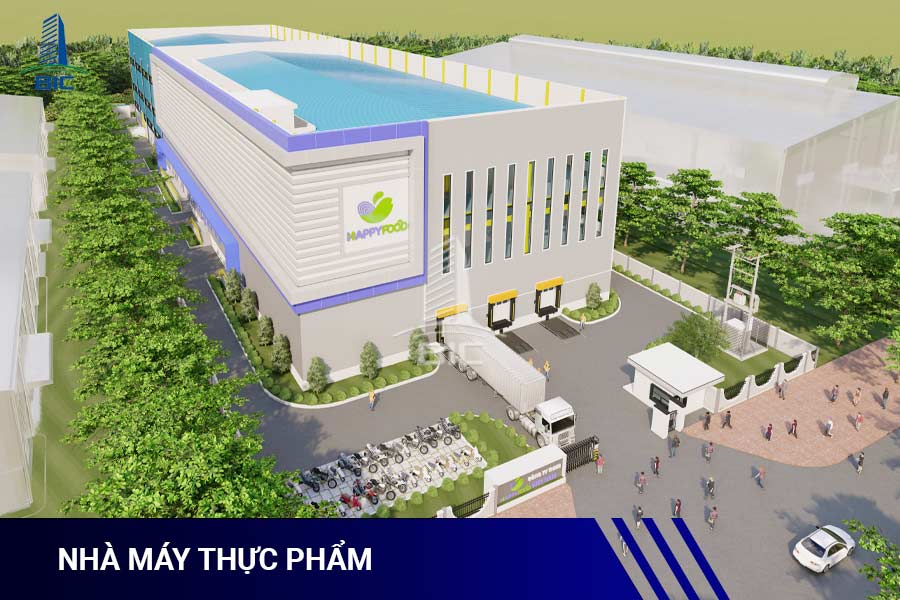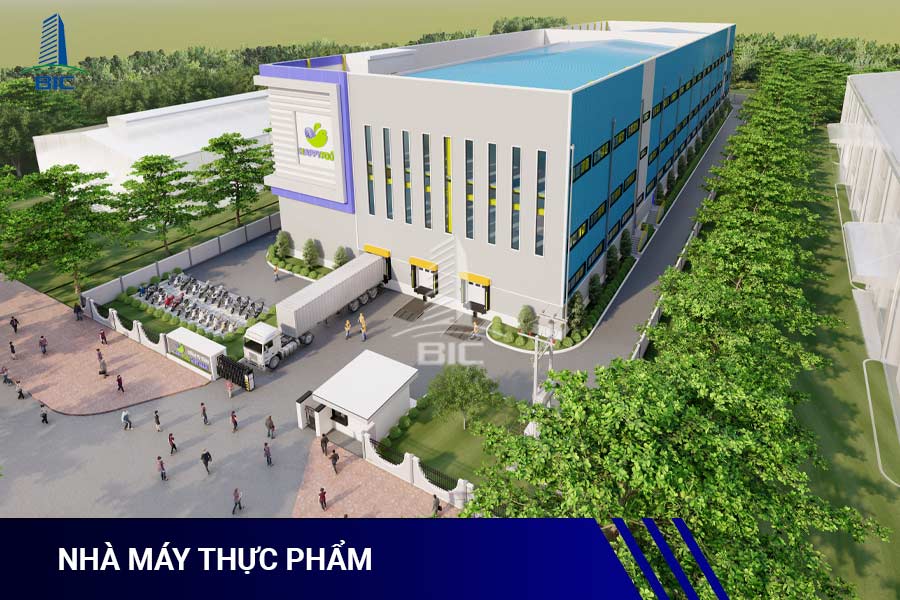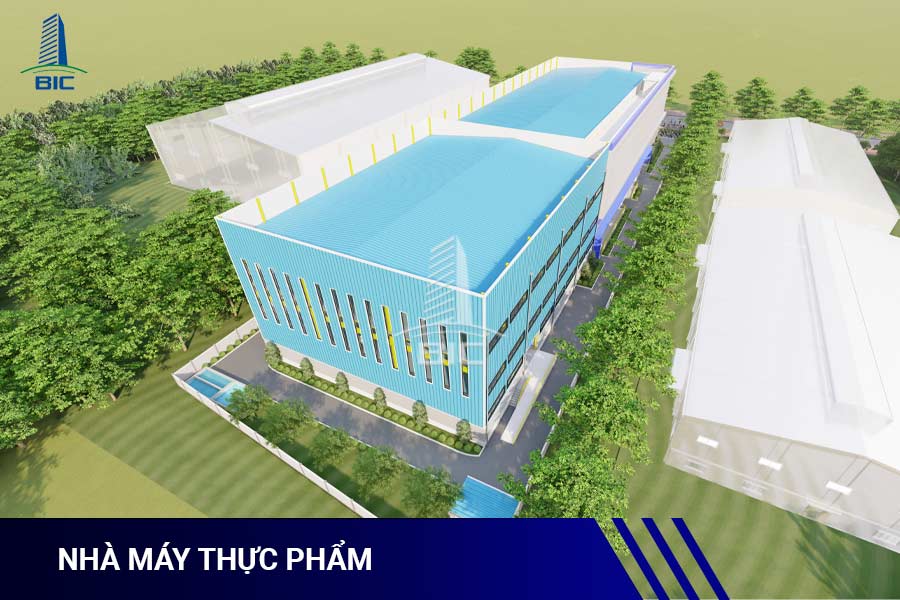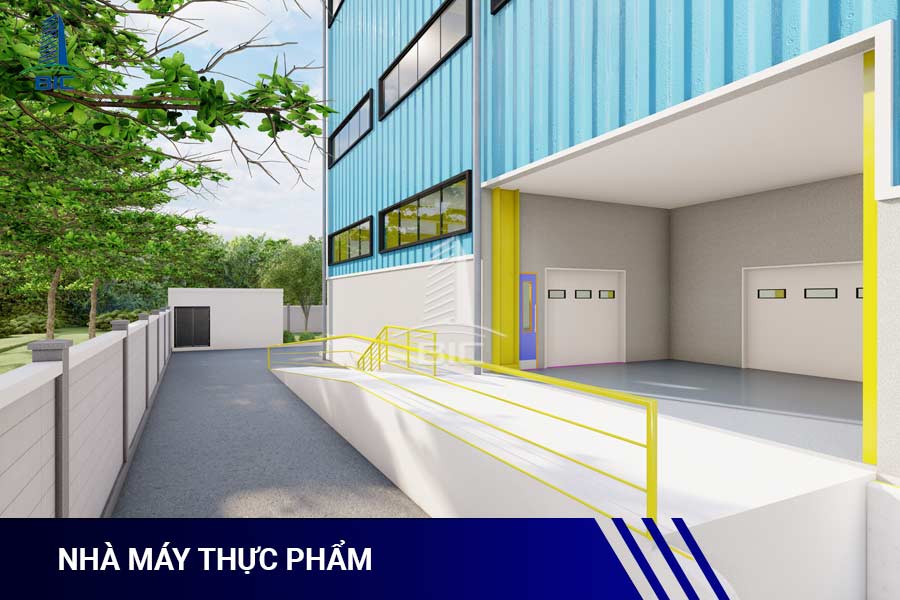
Designing and constructing a food processing plant that meets GMP standards is one of the most crucial requirements for food manufacturing enterprises today. GMP (Good Manufacturing Practice) is not only a set of technical and management standards but also a foundation for ensuring product quality, hygiene safety, and brand credibility in the market. A factory designed in compliance with GMP enables enterprises to effectively control the entire production process, prevent contamination risks, and meet both domestic and international licensing requirements.
In Vietnam, the Ministry of Health has issued GMP standards for food, pharmaceuticals, and dietary supplement industries. These standards require that factories, equipment, and production processes be properly arranged to ensure hygiene and strict control at every stage. Internationally, standards such as GMP WHO, GMP EU, and the Codex Alimentarius are widely adopted, especially by enterprises aiming to export to markets with stringent food safety requirements.
In practice, achieving GMP certification begins not during production but right from the design and construction stage. If the design fails to ensure a one-way production flow, proper separation between clean and unclean areas, or if the building materials do not meet hygiene standards, the facility will struggle to obtain certification, no matter how advanced its operating systems are.
With extensive experience in food, pharmaceutical, and clean industry projects, BIC has established itself as a leading firm in consulting and designing GMP-compliant factories. BIC’s projects are planned with scientific precision, strictly adhering to both Vietnamese and international regulations, while optimizing investment costs and construction time.
This article will help investors better understand technical design requirements, construction processes, domestic and international GMP standards, as well as key considerations to ensure stable operations, fast certification, and long-term sustainability for food manufacturing facilities.
Designing a GMP-compliant food plant is the foundation for controlling the entire production process and preventing cross-contamination. A proper design ensures that the flow of materials, equipment, and personnel is logically arranged, avoiding intersections between clean and contaminated zones, thus maintaining strict hygiene conditions. As a result, final products achieve consistent quality and absolute safety for consumers.
A scientifically planned factory layout from the outset significantly reduces investment, maintenance, and operating costs. GMP-compliant design not only ensures logical functional zoning but also optimizes production–personnel–material flows, minimizing travel distances, losses, and inefficiencies. Properly sizing utilities and equipment in the design phase also helps save long-term operational expenses.

A properly designed GMP facility is a prerequisite for obtaining GMP certification from the Ministry of Health or international organizations such as WHO, the EU, or Codex. Once certified, the plant can expand into export markets especially in regions with high food safety requirements like the U.S., Europe, and Japan. This certification is a key competitive advantage that enhances the enterprise’s reputation and global partnerships.
A GMP-certified factory reflects not only technical capability but also the enterprise’s commitment to quality and consumer health. Investing properly in design builds a professional, trustworthy image and strengthens brand prestige in the marketplace.
To ensure the project meets all technical, sanitary, and operational requirements, investors should work with professional design consultants experienced in GMP projects. Firms like BIC possess in-depth knowledge of both Vietnamese and international GMP regulations and are skilled at optimizing space, technical systems, and investment costs. Their designs balance efficiency, safety, and compliance, creating a solid foundation for sustainable food production.
In Vietnam, GMP is regulated by the Ministry of Health under Circular 18/2019/TT-BYT, applying to food, pharmaceutical, and functional food facilities. This mandatory standard ensures products are manufactured, controlled, and stored safely, minimizing contamination or quality deviations.
Key requirements include:
Facilities, equipment, and layouts must meet hygiene conditions and be logically arranged between production, storage, and auxiliary areas.
- Personnel must be trained in personal hygiene and food safety.
- Production processes must be standardized, recorded, and monitored regularly.
- Raw materials, packaging, and finished goods must be batch-controlled, with separate areas for sample retention, testing, and rejected products.
Designing a factory that complies with Vietnam GMP is essential for obtaining food safety certification and forms a foundation for upgrading to higher international standards.

Enterprises targeting exports must consider international GMP systems such as GMP WHO, GMP EU, and the U.S. cGMP (Current Good Manufacturing Practice).
- GMP WHO (World Health Organization): focuses on comprehensive control of production environment, equipment, personnel, and documentation.
- GMP EU (European Union): emphasizes product lifecycle management, ensuring every stage from raw material sourcing to packaging and distribution, is traceable and monitored.
- cGMP (U.S. FDA): regularly updated to reflect technological advancements, with particularly strict requirements for functional foods, beverages, and pharmaceuticals.
While Vietnam’s GMP focuses on facilities and production processes, international GMPs extend into risk management, documentation systems, and equipment validation.
GMP Codex (Codex Alimentarius), issued by FAO and WHO, serves as the global foundation for food hygiene and safety standards. It includes requirements for:
- Environmental control and logical flow of materials and personnel.
- Monitoring temperature, humidity, air quality, and water used in production.
- Personal hygiene, waste management, and pest control.
- Full traceability and documentation of production processes.
Although not mandatory, Codex principles underpin global food safety standards such as HACCP, ISO 22000, BRC, and FSSC 22000.
All GMP systems share one philosophy: “prevention over correction.” Instead of testing quality only at the final stage, GMP ensures control at every step.
For Vietnamese enterprises, designing a GMP-compliant plant ensures compliance with local laws while preparing for upgrades to international systems (GMP WHO, EU, Codex) when scaling or joining global supply chains.
Professional consultants like BIC often design with multi-standard integration ensuring compliance with Vietnamese regulations while ready for international certification saving investors from costly future renovations.
The site must be far from pollution sources (waste, residential zones, toxic chemicals) and well-connected to infrastructure. Layouts must logically separate production, storage, and office areas, avoiding cross-contamination. Minimum ceiling height in production areas is 2.7 m, with heat- and sound-insulated roofing.
Floors, walls, and ceilings must be durable, waterproof, smooth, and easy to clean. Floors should have epoxy or zinc coating, gentle slopes (1–2%) toward drains, and low friction. Wall-floor and wall-ceiling junctions should be rounded or beveled at 45° to prevent dust accumulation. Stainless steel (Inox 304/316) is preferred for food-contact areas. Corrosive or porous materials are not allowed.
Design must follow a one-way principle materials enter at one end, go through production, and finished goods exit the other. Personnel and material routes must be strictly separated. Buffer rooms, changing rooms, and airlocks are required. Production area doors should be smooth, easy to clean, and anti-static.
The power supply must be stable, with backup generators and UPS for critical equipment. Water systems must supply potable, process, and sterile hot water at stable pressure. Piping should be wall-mounted for easy inspection, with tight, leak-proof joints.
All wastewater must be collected separately and treated via biological or physicochemical systems before discharge. Floors must slope toward drains with odor traps and pest barriers.
HVAC must supply HEPA-filtered air to production rooms, maintaining required temperature and humidity. Positive pressure is used in production rooms, negative in labs handling hazardous substances. Ventilation must maintain unidirectional flow and energy efficiency.
Lighting must be bright and uniform, especially in washing, changing, and processing areas. Fixtures should be dust- and shatter-proof. Emergency lighting is required for exits and restrooms.
Factories must be sealed to prevent pest entry. Waste areas should be isolated and waterproof, with regular pest control programs and insect traps installed.

- Survey & Concept Design: Assess site conditions and capacity, plan functional zoning (raw materials, processing, packaging, storage, auxiliary areas) ensuring logical workflow.
- Technical Design & Approval: Prepare detailed architectural, structural, and MEP drawings (HVAC, water, electricity, fire safety). Submit for regulatory approval, clearly showing pressure control, materials, and flows.
- Construction: Execute works as per approved design, ensuring GMP material and technical compliance. Conduct periodic inspections for quality assurance.
- Final Acceptance: Conduct completion inspection with relevant authorities (e.g., Department of Health). Verify that all systems HVAC, wastewater, cleanrooms meet GMP requirements.
- GMP Certification: Submit application to the Drug Administration of Vietnam (DAV). An inspection team will assess the facility within 20–60 days. If compliant, GMP certification is granted; otherwise, corrective action is required before re-inspection.
- Ignoring the one-way flow principle, causing cross-contamination between personnel and materials.
- Using substandard materials (non-stainless, non-hygienic) leading to corrosion, leakage, and contamination.
- Technical system errors in HVAC, lighting, or drainage design, often discovered late during audits.
- Inadequate buffer and sanitation facilities, disrupting hygiene protocols.
- Lack of professional consultation, resulting in basic design flaws that fail certification.

- Comprehensive vision and expertise: Experienced firms like BIC conduct thorough surveys and integrate all GMP requirements (flow, zoning, materials, HVAC) into the design.
- Regulatory compliance assurance: Designs guided by GMP specialists ensure full conformity to air pressure, cleanliness, and waste management standards.
- Cost and schedule optimization: Experienced consultants forecast budgets accurately, use 3D modeling, and manage timelines effectively.
- Legal support: Firms like BIC assist in documentation, regulatory submissions, and GMP inspection preparation, minimizing legal and technical risks.
Designing a GMP-compliant food factory is a strategic investment that directly affects product quality and competitiveness. Strict adherence to design, material, layout, and system standards ensures smooth certification and safe operation. Partnering with a professional consultant like BIC guarantees international-standard compliance while optimizing cost and construction time paving the way for long-term, sustainable business growth.